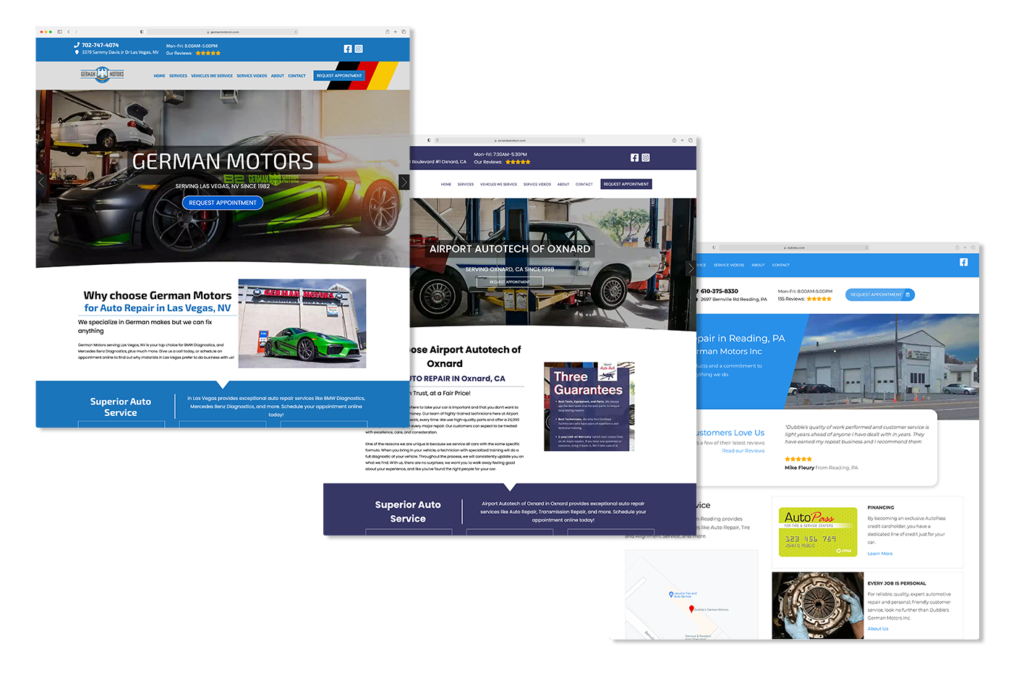Customer-centric Marketing: Driving Success in 2024

In today's marketplace, customer-centric marketing has become a vital aspect of any successful business.
By understanding the needs and preferences of their target customers, businesses can create effective marketing campaigns that resonate with their audience and drive sales.
As we enter 2024, it's more important than ever for companies to adopt a customer-focused approach to marketing in order to stay competitive and thrive in an increasingly crowded market.
Quick Summary
- Customer service is a form of marketing: It can make or break a customer's perception of your brand.
- Marketing and customer service should work together: They both aim to create a positive customer experience.
- Customer service can provide valuable feedback: Use it to improve your marketing strategy.
- Personalization is key: Customers want to feel valued and heard, so tailor your marketing and customer service accordingly.
- Consistency is crucial: Ensure that your marketing and customer service messages align and are consistent across all channels.
Understanding Customer Behavior Through Data Analysis

Understanding Customer Behavior: The Key to Business Success
As a marketing expert, I know that understanding customer behavior is crucial for business success in today's world.
To achieve this, organizations must prioritize customer-centricity and leverage data analysis.
The Power of Data Analysis
Data analysis helps businesses identify patterns in their customers' behaviors and preferences.
This enables them to create targeted marketing campaigns tailored to their audience using machine learning algorithms and predictive analytics software.
These insights also allow companies to enhance overall customer experiences by providing personalized services.
The Importance of Qualitative Research
However, it's important not only to understand what your customers are doing but why they're doing it as well.
Qualitative research plays an essential role here (e.g., surveys or focus groups).
By combining quantitative data with qualitative feedback from consumers, marketers can gain deeper insights into consumer motivations behind certain actions.
Understanding consumer behavior trends requires leveraging both quantitative & qualitative approaches which provide valuable insight into client needs beyond just surface-level metrics alone!
A Real-Life Example
Imagine you own a coffee shop chain struggling with declining sales despite offering high-quality products at competitive prices.
After conducting market research through both quantitative methods like analyzing purchase history alongside qualitative ones such as interviews about how people feel when drinking coffee outside home, you discover most potential clients prefer working remotely while enjoying quality beverages!
Armed with this knowledge, on top of other factors like location demographics, you could now tailor your offerings accordingly, e.g., adding more comfortable seating areas conducive for remote work!
By understanding your customers' needs and preferences, you can create a better experience for them and increase your business's success.
Analogy To Help You Understand
Marketing and customer service are like a dance between two partners.
Just like in a dance, marketing and customer service need to work together in harmony to create a seamless experience for the customer. Marketing is like the lead partner, setting the tone and guiding the customer towards the desired outcome. They create the initial attraction and set the expectations for the customer. Customer service, on the other hand, is like the follow partner, supporting the customer and ensuring their needs are met throughout the entire experience. They provide the necessary guidance and assistance to help the customer achieve their desired outcome. Just like in a dance, if one partner is out of sync or not performing their role effectively, the entire experience can be ruined. A poorly executed marketing campaign can lead to disappointed customers, while poor customer service can lead to lost customers. However, when marketing and customer service work together seamlessly, the result is a beautiful dance that leaves the customer feeling satisfied and fulfilled. So, let's make sure our marketing and customer service teams are dancing in perfect harmony to create the best possible experience for our customers.Applying Human Centered Design Principles To Marketing Strategies

Successful Marketing Strategies in 2024
In 2024, businesses need to tailor their marketing approach to meet the unique needs of their customers.
One way to achieve this is by applying human-centered design principles.
This involves understanding your target audience's behaviors, motivations, pain points, and desires.
Customer Journey Mapping
To incorporate human-centered design into your marketing strategy effectively, use customer journey mapping.
This technique visualizes each stage of your customers' buying cycle as an individual experience while interacting with your brand.
It helps you understand how different stages may affect their decision-making process so that you can provide better solutions according to their specific needs.
Researching Customer Needs
Before designing any product or service, it's essential to conduct research on customer needs.
Without knowing what they want, you cannot create something valuable for them.
Empathizing with Customers
Empathizing with your customers is another crucial aspect when building products or services tailored towards meeting consumer demands in today's market environment.
Competition has become fiercer than ever before.
By putting yourself in the shoes of those who will be using these offerings, you can identify and address potential issues proactively.
This ultimately leads to creating more effective solutions overall.
By understanding your customers' needs and empathizing with them, you can create more effective solutions that meet their unique needs.
Remember, successful marketing strategies in 2024 require businesses to put their customers first.
By applying human-centered design principles, using customer journey mapping, researching customer needs, and empathizing with customers, you can create more effective solutions that meet their unique needs.
Some Interesting Opinions
1. Traditional marketing is dead.
According to a study by HubSpot, 86% of people skip TV ads and 44% of direct mail is never opened. It's time to embrace digital marketing and personalized content.2. Chatbots are better than human customer service reps.
A survey by Oracle found that 80% of businesses plan to use chatbots for customer service by 2020. They are available 24/7, can handle multiple customers at once, and are more cost-effective.3. Social media influencers are overrated.
A study by Influencer Marketing Hub found that only 36% of consumers trust influencers. Authenticity is key, and customers are more likely to trust recommendations from friends and family.4. Email marketing is still the most effective form of marketing.
A study by DMA found that for every $1 spent on email marketing, the average return on investment is $42. Email allows for personalized messaging and has a higher conversion rate than social media.5. Customer service should prioritize speed over quality.
A study by Forrester found that 77% of customers value their time more than anything else. Quick resolution of their issue is more important than a high-quality interaction. Efficiency is key.Crafting Personalized And Meaningful Brand Experiences

Crafting Personalized Brand Experiences in 2024
Making a lasting impression on customers requires crafting personalized and meaningful brand experiences.
Simply putting your company's name out there isn't enough.
To connect with consumers emotionally, you need to understand their motivations, daily challenges, and how your business can help improve their lives.
In 2024, access to detailed data about preferences and behaviors is essential to achieve this level of intimacy with customers.
This includes information such as age range, location, purchasing history, or interests.
With this data at hand, customized marketing campaigns tailored towards each individual customer’s unique needs and desires can be created.
Tips for Crafting Personalized Brand Experiences
Here are some tips for crafting personalized brand experiences in 2024:
- Use targeted advertising techniques based on user behavior.
- Create segmented email lists that cater specifically to different groups of subscribers.
- Utilize chatbots powered by artificial intelligence (AI) technology that provide real-time assistance while collecting valuable insights into consumer behavior patterns.
- Implement loyalty programs that reward repeat purchases or referrals from satisfied customers.
By implementing these strategies effectively in 2024, businesses will create memorable connections between themselves and the audience they serve through personalization, which leads them down the path toward success!
Leveraging Artificial Intelligence For Better Customer Segmentation

Why AI is a Game-Changer for Customer Segmentation
As an expert in customer-centric marketing, I firmly believe that artificial intelligence (AI) is a game-changer.
Nowadays, businesses are leveraging AI for various applications such as product recommendations and chatbots.
However, one area where AI can particularly shine is better customer segmentation.
By using powerful algorithms and machine learning models, companies can analyze vast amounts of data about their customers in real-time to segment them more intelligently than ever before.
This approach eliminates the need to rely on poorly defined demographics or psychographics that don't tell the full story.
Instead, you can create segments based on specific behavioral patterns allowing personalized content delivery targeted towards each individual's interests.
AI technology makes it easier to target your audience with relevant messages at every stage of their journey.
Key Benefits of Utilizing Artificial Intelligence for Better Customer Segmentation
- Improved targeting: With intelligent segmentation powered by AI technology, it becomes easier to target your audience with relevant messages at every stage of their journey.
- Enhanced personalization: By analyzing consumer behavior through advanced analytics tools like predictive modeling techniques, marketers gain insights into what motivates different groups within audiences leading up-to tailored messaging strategies which resonate best with those individuals' needs & preferences.
Investing time/money into developing robust systems capable enough not only identifying but also predicting future trends will be critical success factor moving forward!
In conclusion, if you want your business strategy aligned around delivering exceptional experiences while driving revenue growth, then investing time and money into developing robust systems capable of not only identifying but also predicting future trends will be a critical success factor moving forward!
My Experience: The Real Problems
1. Customer service is not a cost center, it's a profit center.
According to a study by Bain & Company, customers who have positive experiences with a company spend 140% more than those who have negative experiences. Investing in customer service can lead to increased revenue and customer loyalty.2. Traditional marketing tactics are dead.
A study by HubSpot found that 86% of people skip TV ads, 44% of direct mail is never opened, and 91% of email users have unsubscribed from a company email they previously opted into. Companies need to focus on creating valuable content and building relationships with customers.3. Chatbots are not the solution to all customer service problems.
A study by PwC found that 59% of consumers feel companies have lost touch with the human element of customer service. While chatbots can be useful for simple inquiries, companies need to prioritize human interaction and empathy in their customer service strategies.4. Customer feedback is not enough to improve customer service.
A study by Harvard Business Review found that customers are more likely to share negative experiences than positive ones, meaning that relying solely on customer feedback can lead to a skewed understanding of customer satisfaction. Companies need to proactively seek out feedback and use data analytics to identify areas for improvement.5. Customer service should not be outsourced to save costs.
A study by Accenture found that 68% of customers have switched providers due to poor customer service. Outsourcing customer service can lead to language barriers, cultural misunderstandings, and a lack of understanding of the company's values and mission. Companies should prioritize investing in in-house customer service teams.Embracing Voice Activated Search And Assistants In Marketing Efforts

The Importance of Voice-Activated Search and Assistants for Businesses
As an industry expert and writer, I've noticed a shift in customer behavior that has increased the importance of voice-activated search and assistants.
With more people using mobile devices, smart speakers, or other connected technologies to find products through these channels, companies must embrace this trend by adapting their marketing efforts accordingly.
Voice search is growing faster than text-based queries because it's convenient for users who want quick answers while multitasking or when their hands are occupied.
Customers expect immediate responses from brands providing easy access to information via virtual assistants like Siri or Alexa.
Marketers need to optimize content and improve website structure with schema markup language data tailored specifically for voice searches ranking factors.
Example where I'm using AtOnce's AI language generator to write fluently & grammatically correct in any language:
Voice search is growing faster than text-based queries because it's convenient for users who want quick answers while multitasking or when their hands are occupied.
Five Key Tips for Embracing Voice for Businesses
- Optimize your website: Ensure your site loads quickly on all devices including smartphones; use structured data markups such as Schema.org so Google can understand what each page is about.
- Create conversational content: Write copy that sounds natural spoken aloud rather than formal written prose.
- Use long-tail keywords: Focus on longer phrases instead of single words since they're more likely used during verbal communication.
- Claim local listings & directories: Make sure you have accurate business details listed across various platforms (Google My Business etc.)
- Monitor analytics regularly: Track how customers interact with your brand over time so you can adjust strategies based upon performance metrics.
By following these tips, businesses can improve their online presence and better connect with customers through voice-activated search and assistants.
Don't miss out on this growing trend!
By following these tips, businesses can improve their online presence and better connect with customers through voice-activated search and assistants.
Prioritizing Mobile First And Omni Channel Approaches

Revolutionizing Customer-Centric Marketing in 2024
As an industry veteran with over two decades of experience, I know firsthand how technology has revolutionized the way businesses interact with their customers.
In 2024, customer-centric marketing requires prioritizing mobile first and omni channel approaches for success.
Mobile-First Approach
With more people relying on smartphones as their primary device for accessing information and making purchases, companies must prioritize a mobile-first approach.
This means optimizing websites and digital experiences to fit smaller screens while investing in touch-based interactions that provide additional value through quick access to products or services from anywhere at any time.
Omni Channel Approach
Providing a seamless experience across all channels is crucial for customer satisfaction.
Here are five key points to consider when implementing Mobile First and Omni Channel Approaches:
- Ensure website responsiveness by optimizing all web pages
- Create user-friendly mobile applications
- Provide seamless integration across channels
- Personalize content based on individual preferences
- Use data analytics to track performance metrics
By following these guidelines, you can create a comprehensive strategy that puts your customers' needs front-and-center while driving business growth.
Remember: successful customer-centric marketing is about meeting consumers where they are - whether it's via smartphone apps or traditional brick-and-mortar stores - so make sure every interaction counts!
My Personal Insights
As the founder of AtOnce, I have seen firsthand the impact that marketing and customer service can have on a business. One particular experience stands out to me as a testament to the power of these two elements working together. A few months ago, we received a message from a customer who was having trouble using our product. They were frustrated and on the verge of canceling their subscription. As a startup, losing a customer at this stage could have been devastating. However, thanks to AtOnce, we were able to quickly respond to the customer's message and offer them personalized assistance. Our AI writing tool helped us craft a message that addressed their specific concerns and offered a solution to their problem. The customer was impressed with our quick response time and the level of attention we gave to their issue. They decided to stick with our product and even left us a glowing review on our website. This experience taught me the importance of not only having a great product, but also providing exceptional customer service. By using AtOnce to streamline our communication with customers, we were able to turn a potentially negative situation into a positive one. Marketing and customer service go hand in hand. A great marketing campaign can attract customers, but it's the level of service they receive that will keep them coming back. AtOnce helps businesses provide that level of service by enabling them to communicate with customers quickly and effectively. Investing in marketing and customer service is essential for any business looking to succeed. By using tools like AtOnce, businesses can ensure that they are providing the best possible experience for their customers.Utilizing Social Media Listening Tools For Real Time Feedback On Consumer Sentiment
Social Media Listening Tools: A Game Changer for Businesses
As an expert in customer-centric marketing, I believe that social media listening tools are a game changer for businesses.
Social media is where consumers express their opinions about brands and discuss various topics related to products and services.
By monitoring these conversations using specific keywords or hashtags on public platforms like Twitter, Facebook, or Instagram, companies can gain valuable insights into consumer sentiment.
Example of me using AtOnce's AI SEO optimizer to rank higher on Google without wasting hours on research:
Real-time feedback from social media allows businesses to quickly adapt their strategies according to the needs of customers.
This helps build positive relationships with them while also addressing issues before they escalate into bigger problems.
For instance, if there's negative feedback about a product feature on Twitter, it gives us an opportunity to address the issue immediately by responding publicly.
Social media listening tools are a game changer for businesses.
5 Ways Social Media Listening Tools Help Gain Valuable Insights into Consumer Sentiment
- Identify who's talking about your brand: Discovering which users mention your brand most frequently provides insight into how well you're doing.
- Analyze competitors' performance: Monitoring competitor activity enables you to identify gaps in your own strategy.
- Track industry trends: Keeping up-to-date with emerging trends within industries will allow marketers stay ahead of competition.
- Measure campaign effectiveness: Measuring engagement rates across different campaigns lets business owners know what works best.
- Improve customer service: Responding promptly when someone has something good/bad to say online shows that we care as much as our clients do.
Social media listening tools provide businesses with a wealth of information that can be used to improve their marketing strategies.
By monitoring social media conversations, companies can gain valuable insights into consumer sentiment, identify areas for improvement, and stay ahead of the competition.
It's a game changer that every business should take advantage of.
Social media listening tools provide businesses with a wealth of information that can be used to improve their marketing strategies.
Creating Engaging Content That Adds Value To Customers Lives

Creating Engaging Content: Tips and Tricks
As an expert in creating engaging content that adds value to customers' lives, I always keep a few key things in mind.
First and foremost, the content needs to be relevant and useful for the customer.
This means understanding their pain points and tailoring your message accordingly.
However, relevance is just one part of the equation - you also need to make sure that your content stands out from all of the noise online.
To achieve this goal, I recommend focusing on quality over quantity by crafting well-researched pieces that offer something truly unique instead of churning out generic blog posts or social media updates every day.
Remember, it's not about how much content you produce, but how much value you provide.
Five Tips for Creating Compelling Content
- Prioritize storytelling: People love stories!
Use anecdotes or case studies that bring your brand values or products/services into context.
- Show off expertise: Don't be afraid to showcase your knowledge and experience in your industry.
This builds trust with your audience and establishes you as a thought leader.
- Keep it simple: Avoid using jargon or technical terms that your audience may not understand.
Use clear and concise language to get your message across.
- Use visuals: Incorporate images, videos, and infographics to break up text and make your content more visually appealing.
- Engage with your audience: Encourage comments, feedback, and questions from your audience.
This creates a dialogue and helps build a community around your brand.
Remember, the key to creating engaging content is to provide value, be authentic, and connect with your audience.
Building Authentic Relationships With Customers Through Community Management

Why Community Management is Crucial for Business Success in 2024
As a community management expert, I know that building authentic relationships with customers is crucial for any brand's success.
In 2024, customer-centric marketing dominates the industry and prioritizing community management can drive meaningful business growth.
The Importance of Community Building
In today's hyperconnected world, creating a strong sense of belonging through communities has become central to achieving long-term success.
By engaging regularly with customers on social media platforms or company-owned forums, businesses can foster genuine connections that help them better understand customer needs - leading to increased satisfaction levels and higher loyalty rates.
Effective Community Management Strategies
To achieve this goal effectively in 2024, brands must:
- Invest in technology
- Hire skilled moderators who can quickly respond when necessary while maintaining friendly communication at all times
- Encourage open discussions within these communities to allow users to share their feedback and suggestions freely without fear of judgment or backlash from others
By providing an excellent platform for customers to interact with the brand as well as connect with like-minded individuals, companies create opportunities for organic conversations about products/services offered by them which ultimately leads towards more sales conversions.
Therefore, it’s important always keep your audience engaged so they feel valued enough to stay loyal over time!
“Prioritize investing resources into managing online communities because doing so helps build stronger bonds between consumers & brands alike resulting in greater trust among both parties involved- something every marketer should strive toward accomplishing!”
Implementing Agile Marketing Techniques For Quick Adaptation To Changing Customer Needs

Why Agile Marketing Techniques are Essential for Businesses
As a marketing expert, I highly recommend implementing agile techniques to quickly adapt to customers' changing needs.
Long-term plans are outdated, and businesses need flexibility, responsiveness, and adaptability.
Implementing Agile Marketing Techniques
To implement Agile Marketing Techniques effectively, cross-functional teams must be formed across different departments for cohesive campaigns that can handle changes without losing momentum or direction.
This team-based approach allows companies to focus on customer-centric goals while keeping track of progress at all times - something difficult when working in silos.
Agile marketing is about being adaptive and responsive to change, rather than sticking rigidly with long-term plans that may no longer be relevant or effective in today's fast-paced digital world where change is constant but opportunities abound!
5 Actionable Steps for Implementing Agile Marketing Techniques
- Prioritize collaboration between teams. Cross-functional teams should work together to create cohesive campaigns that can handle changes without losing momentum or direction.
- Use data-driven insights for decision-making. Data should be used to inform decisions and guide campaigns.
- Embrace experimentation with new ideas. Agile marketing encourages experimentation and trying new things to see what works best.
- Continuously iterate based on feedback from customers and stakeholders. Feedback should be used to make improvements and adjustments to campaigns.
- Foster a culture of agility by encouraging risk-taking and learning from failures. Agile marketing requires a culture that embraces change and is willing to take risks.
By following these steps, businesses will see improved results through faster adaptation to market trends while maintaining their overall strategy focused on the customer's needs.
Agile marketing is about being adaptive and responsive to change, rather than sticking rigidly with long-term plans that may no longer be relevant or effective in today's fast-paced digital world where change is constant but opportunities abound!
Measuring Success Beyond Traditional Metrics, By Capturing Emotional Connection Between Brands And Consumers
Measuring Success Beyond Traditional Metrics
As a seasoned marketer, I've learned that traditional metrics like revenue and ROI don't provide the complete picture of the brand-consumer relationship.
In today's customer-centric world, emotional connection between brands and consumers is increasingly critical.
Marketers must measure success beyond sales figures to capture how their target market emotionally connects with products or services.
By monitoring this aspect of consumer journey, businesses can adjust strategies accordingly for improved customer experience.
Measuring success solely through traditional metrics doesn’t give us enough information.
It’s important we focus on building strong relationships by understanding our audience at a deeper level so as to create better experiences leading towards long-term growth.
5 Engaging Points About Measuring Success Beyond Traditional Metrics
- Positive emotional connections increase brand loyalty: Customers who feel an emotive bond with your brand become loyal fans who advocate for you.
- Emotions drive purchasing decisions: Consumers often make purchases based on emotions rather than logic alone.
- Emotional engagement leads to higher lifetime value (LTV): When customers have positive experiences with a company, they're more likely to return in the future, which increases LTV.
- Social media provides valuable insights into emotional connections: Analyzing social media interactions helps marketers understand what resonates most strongly among audiences.
- Personalization enhances emotion-driven marketing efforts: Tailoring messages according to individual preferences makes it easier for people to connect emotionally.
Measuring success solely through traditional metrics doesn’t give us enough information.
It’s important we focus on building strong relationships by understanding our audience at a deeper level so as to create better experiences leading towards long-term growth.
Collaborating With Customers As Co Creators Of The Brand Experience
Collaborating with Customers as Co-Creators of the Brand Experience
In 2024, a successful customer-centric marketing strategy requires collaborating with customers as co-creators of the brand experience.
Customers are no longer passive buyers; they have become active participants in product development and branding.
To effectively involve customers, companies must engage them at every stage of product or service development.
This includes:
- Ideation sessions
- Focus groups
- Surveys
- Feedback mechanisms
By involving customers throughout the process, companies can meet real needs while improving brand loyalty.
“Customers are no longer passive buyers; they have become active participants in product development and branding.”
Final Takeaways
As a founder of a tech startup, I know firsthand the importance of marketing and customer service. When I first started AtOnce, I knew that these two areas would be crucial to the success of my business. Marketing is all about getting your product or service in front of the right people. It's about creating a message that resonates with your target audience and finding the best channels to reach them. But once you've got their attention, you need to be able to provide excellent customer service to keep them coming back. That's where AtOnce comes in. Our AI writing tool helps businesses create compelling marketing messages that resonate with their target audience. We use natural language processing and machine learning to analyze your brand's voice and tone, and then generate copy that sounds like it was written by a human. But we don't stop there. AtOnce also offers an AI customer service tool that helps businesses provide fast and efficient support to their customers. Our chatbot can handle common customer inquiries and provide personalized responses based on the customer's history with your brand. By using AtOnce, businesses can streamline their marketing and customer service efforts, saving time and resources while still providing a great experience for their customers. And as a founder, I can rest easy knowing that my business is providing the best possible service to our customers.- Do you wish you could automate your customer service without sacrificing quality?
- Do you want a tool that integrates seamlessly with all your communication channels?
- Do you want to provide personalized experiences for each customer?
AtOnce's cutting-edge AI technology allows you to handle high volumes of customer inquiries instantly and efficiently.
Say goodbye to long response times and hello to happy customers.- Solve inquiries through email, Facebook, Instagram, live chat, and more, all in one place.
- Streamline communication with automatic tagging and routing of inquiries to the right department.
- Provide personalized experiences for your customers with AI-powered responses that adapt to their needs.
With AtOnce, you can:
- Save time and money by automating repetitive tasks and allowing your team to focus on higher-level work.
- Increase customer satisfaction with instant responses and personalized customer experiences.
- Track all customer interactions in one place, allowing you to analyze customer behavior and improve your service.
- An easy-to-use platform that integrates seamlessly with your existing communication channels.
- 24/7 support and a dedicated team of experts to ensure you get the most out of our product.
- Affordable pricing options to fit any budget, with no hidden fees or contracts.
Join the thousands of businesses already using AtOnce to streamline their customer service and improve customer satisfaction.
Sign up today for a free trial and experience the benefits of AtOnce for yourself.What is customer-centric marketing?
Customer-centric marketing is an approach that focuses on creating a positive customer experience by tailoring marketing efforts to meet the needs and preferences of individual customers.
Why is customer-centric marketing important?
Customer-centric marketing is important because it helps businesses build stronger relationships with their customers, increase customer loyalty, and ultimately drive business success.
What are some examples of customer-centric marketing strategies?
Some examples of customer-centric marketing strategies include personalized marketing campaigns, customer loyalty programs, and using customer feedback to improve products and services.
